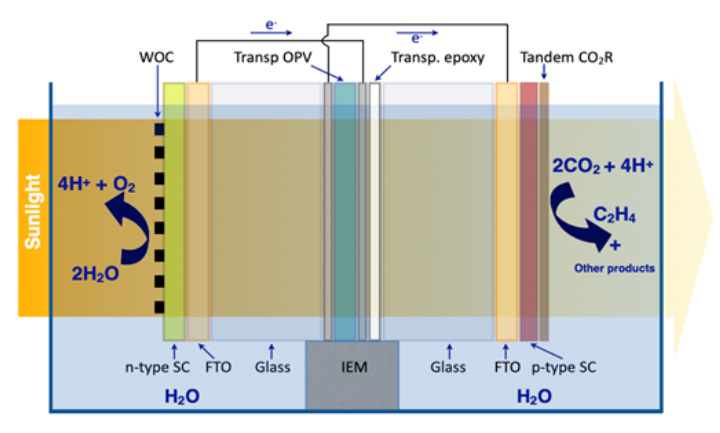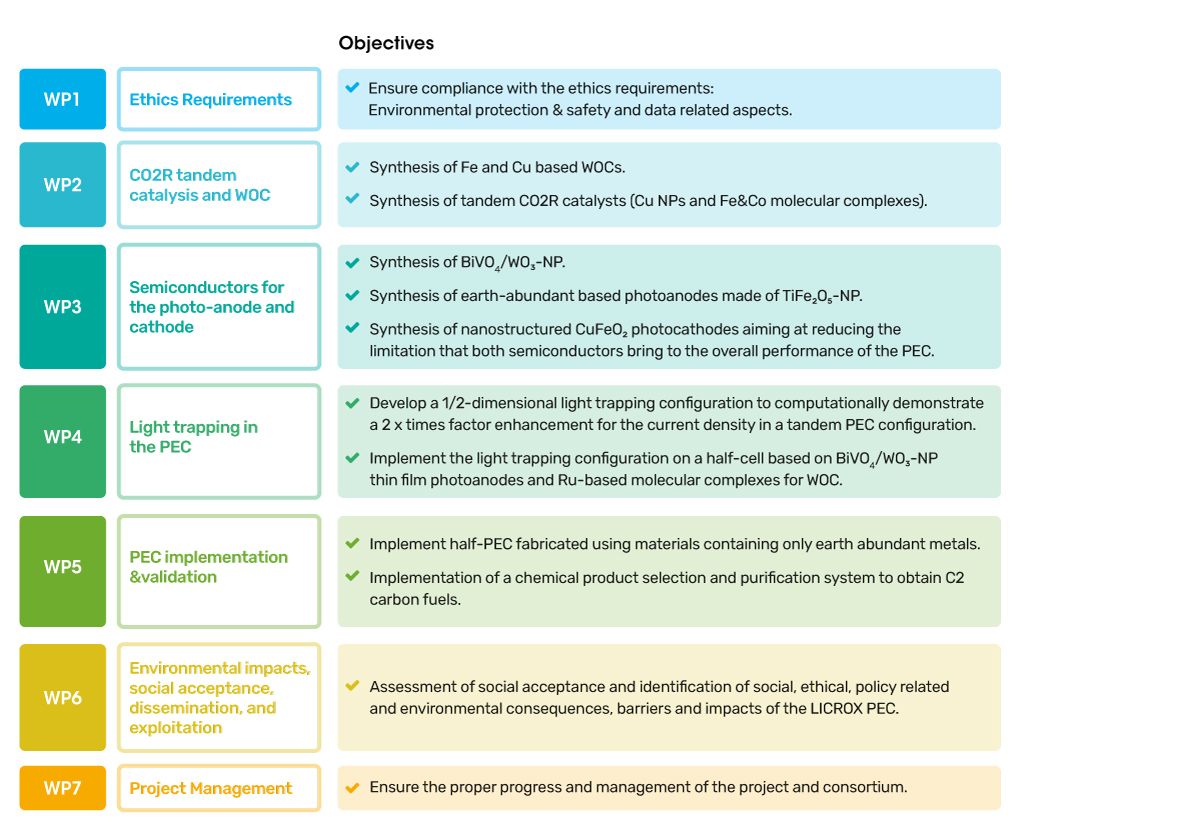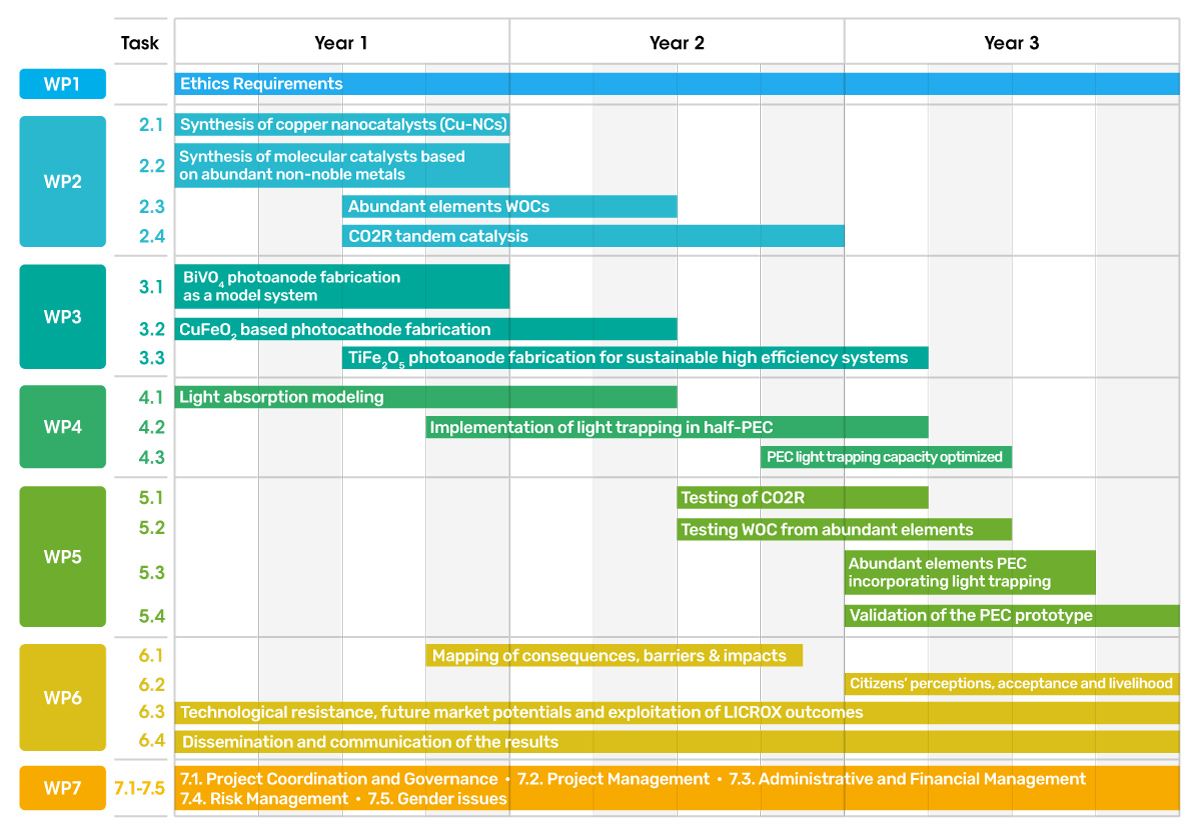In LICROX we will fabricate and test a PEC for converting sunlight into C1 or C2 molecules capable of storing chemical energy
Artificial photosynthesis mimics the natural process of converting sunlight to energy stored in chemical bonds. In LICROX we will fabricate and test a photoelectrochemical cell (PEC), an artificial photosynthesis device for converting sunlight, water and carbon dioxide (CO2 ) into carbon-based molecules containing 1 carbon (C1) or 2 carbons (C2), capable of storing chemical energy.
We will target the formation of ethylene, one of the products mostly used by chemical industries for the production of polymers and other materials, with a high energy efficiency (Faradaic efficiency (FE) larger than 85%). The PEC will be constructed in a compact tandem structure consisting of a photoanode, a semi-transparent organic solar cell, and a photocathode for a broadband absorption of sunlight to achieve high current densities (above 5 mA/cm2). These photoelectrodes will be coupled to catalysts composed of nanoparticles (NPs) or molecular complexes of non-noble metals (Cu, Fe, Co) to drive the water oxidation and carbon dioxide reduction (CO2R) reactions in an aqueous electrolyte at near-neutral pH.

Schematic representation of the complete PEC configuration for the generation of solar fuels. The device consists of: i) left: photoanode incorporating the WOC (Water Oxidation Catalyst) and light scattering elements, ii) middle: a semi-transparent organic photovoltaic solar cell (OPV), and iii) right: a nanostructured photocathode coupled to tandem catalysts for carbon dioxide reduction (CO2R). The two half cells are connected with electrical conductors and the anolyte and catholyte are separated with a suitable ion exchange membrane (IEM).
Team
To accelerate the endeavour of converting the triple junction PEC proposed into a working technology for transforming light and CO2 into compounds capable of storing chemical energy, LICROX brings together an interdisciplinary team of scientists with a comprehensive expertise in materials chemistry, semiconductor physics, electrochemistry, and photonics from EPFL, TUM, ICIQ and ICFO. Designing a strategy by DBT to overcome societal resistance, LICROX will set the route for a new scalable renewable energy technology to be initially pushed towards an industrial implementation and commercialization by Avantama, Hysystech and a newly developed spin-off from ICFO.

Project planification
Project duration: 1 September 2020 to 31 August 2023


